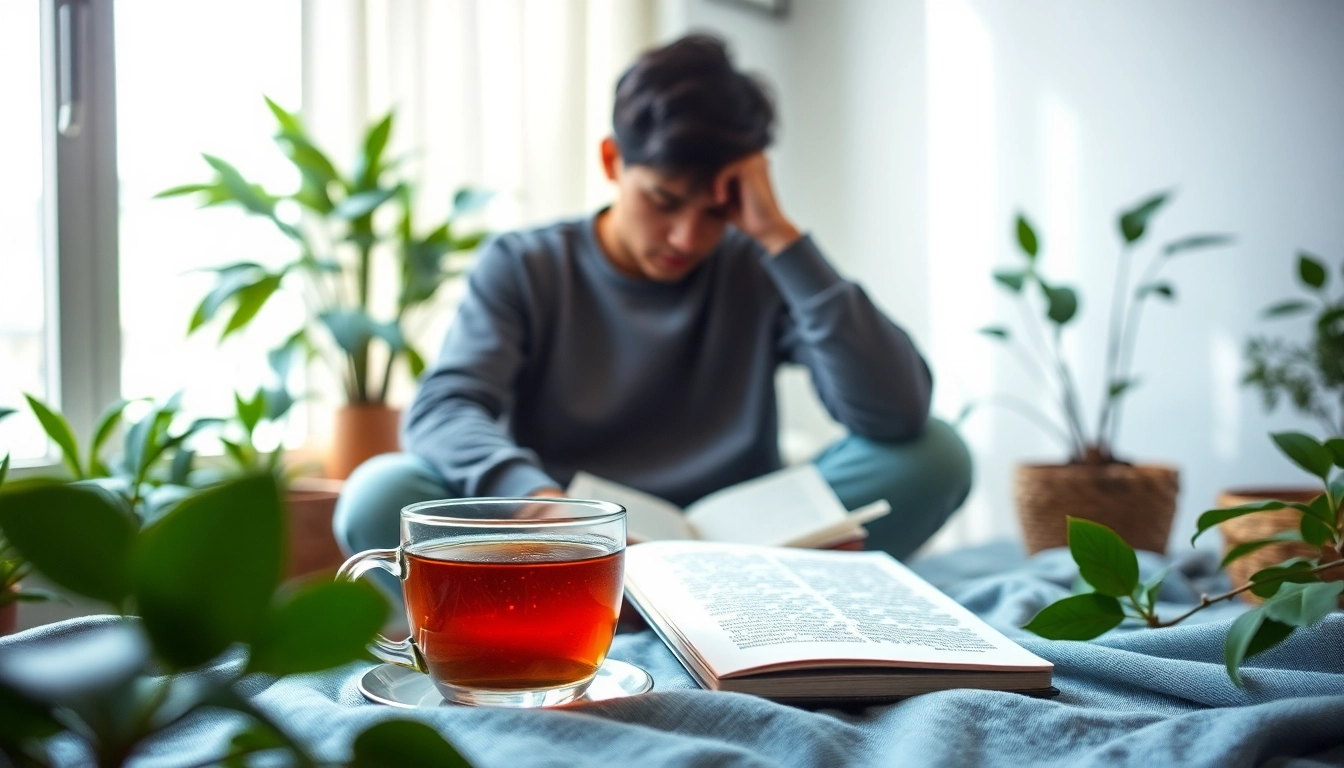Effective Strategies for Dealing with Anxiety: Insights and Practices

Understanding Anxiety: Types and Symptoms
What is Anxiety? A Brief Overview
Anxiety is a natural response to stress and is experienced by everyone at some point in their lives. It can be a normal reaction to a challenging situation, such as a job interview or an exam. However, when anxiety becomes persistent and interferes with daily activities, it may indicate an anxiety disorder. According to the dealing with anxiety resources, anxiety disorders are the most common mental health conditions affecting millions of people annually. Understanding the nature of anxiety is crucial, as it lays the groundwork for effective management and coping strategies.
Common Symptoms of Anxiety Disorders
The symptoms of anxiety can manifest in various ways, both psychologically and physiologically. Recognizing these symptoms is the first step towards managing them effectively. Common symptoms include:
- Emotional Symptoms: Persistent fear, restlessness, irritability, and an overwhelming sense of impending doom.
- Physical Symptoms: Increased heart rate, sweating, trembling, and fatigue.
- Behavioral Symptoms: Avoidance of certain situations or places, leading to a decline in social activities and interactions.
These symptoms can vary significantly in severity, and individuals may experience them differently. Recognizing these variations can empower people to seek help and employ strategies to mitigate their effects.
Different Types of Anxiety Disorders
Anxiety is not a one-size-fits-all condition. There are various types of anxiety disorders, each with distinct characteristics:
- Generalized Anxiety Disorder (GAD): Characterized by excessive worry about various aspects of life—work, health, and family—over an extended period.
- Panic Disorder: Involves sudden and repeated episodes of intense fear accompanied by physical symptoms such as heart palpitations and shortness of breath.
- Social Anxiety Disorder: A debilitating fear of social situations, where individuals may experience intense anxiety and self-consciousness in public.
- Specific Phobias: Intense, irrational fears of specific objects or situations, leading to avoidance behavior.
- Obsessive-Compulsive Disorder (OCD): Involves unwanted repetitive thoughts (obsessions) and behaviors (compulsions) that an individual feels driven to perform.
- Post-Traumatic Stress Disorder (PTSD): Occurs after experiencing or witnessing a traumatic event, resulting in flashbacks and severe anxiety.
Understanding the type of anxiety disorder can help in identifying the most effective treatment options.
Identifying Triggers: Why Do We Experience Anxiety?
Emotional Triggers: Understanding Your Feelings
Emotional and psychological triggers play a significant role in the onset of anxiety. Common emotional triggers include past traumas, feelings of inadequacy, or situations that evoke fear and uncertainty. For example, a person who has experienced bullying may feel anxious when faced with similar social situations. Understanding the root causes of these feelings can aid in recognizing patterns and developing coping mechanisms.
Physical Triggers: Signs to Look For
Sometimes physical triggers can exacerbate anxiety. These may include:
- Diet: Poor nutrition or caffeine can increase anxiety levels.
- Sleep: A lack of restful sleep can worsen anxiety symptoms.
- Substance Use: Alcohol and recreational drugs can exacerbate anxiety symptoms and lead to a cycle of dependency.
Recognizing these physical triggers allows individuals to take steps to mitigate their impact, such as improving their diet or establishing a better sleep routine.
Lifestyle Factors that Contribute to Anxiety
Lifestyle choices significantly influence anxiety levels. Factors such as high-stress jobs, lack of physical activity, and limited social interaction can lead to heightened anxiety. Additionally, environmental influences like noise and pollution can contribute to feelings of unease. Addressing lifestyle factors can involve organized planning to incorporate healthier habits, including regular exercise and dedicated time for relaxation and socialization.
Practical Tips for Dealing with Anxiety
Relaxation Techniques to Alleviate Symptoms
Practicing relaxation techniques can play a vital role in managing anxiety symptoms. Here are some effective methods:
- Deep Breathing: Focusing on deep, rhythmic breaths lowers heart rate and calms the mind. Techniques such as the 4-7-8 breathing method can be particularly effective.
- Progressive Muscle Relaxation (PMR): This involves systematically tensing and relaxing different muscle groups to release physical tension.
- Guided Imagery: This technique encourages visualization of peaceful scenes or experiences to promote relaxation.
Incorporating these techniques into daily routines can help reduce the intensity of anxiety symptoms, providing immediate relief when feelings of anxiety arise.
Mindfulness Practices for Everyday Calm
Mindfulness involves staying present in the moment and can significantly reduce anxiety levels. Here are ways to integrate mindfulness into daily life:
- Meditation: Regular meditation practice, even for a few minutes each day, can drastically improve mental clarity and emotional regulation.
- Mindful Eating: Focusing on the experience of eating—taste, texture, and smell—can help reduce anxiety and promote healthier eating habits.
- Gratitude Journaling: Maintaining a journal to document things you are grateful for can shift focus from stressors to positive aspects of life.
These practices foster a sense of calm and control, which can alleviate feelings of anxiety in various situations.
Exercise and Its Role in Managing Anxiety
Physical activity is crucial for both mental and physical health. Regular exercise has been shown to be effective in reducing the symptoms of anxiety. Here’s why:
- Endorphin Release: Exercise increases the production of endorphins, neurotransmitters that promote feelings of happiness and euphoria.
- Stress Reduction: Physical activity helps to lower stress hormones like cortisol.
- Improved Sleep: Engaging in regular exercise can enhance sleep quality, which is essential for managing anxiety.
Individuals do not need to engage in rigorous workouts; even moderate activities like walking, yoga, or biking can have a profound impact on mood and anxiety levels.
Seeking Professional Help: When Is It Necessary?
Types of Therapies for Anxiety
There are various therapeutic approaches to treat anxiety disorders, and recognizing when to seek professional help is crucial. Common therapies include:
- Cognitive Behavioral Therapy (CBT): This is one of the most effective treatments for anxiety, focusing on identifying and changing negative thought patterns and behaviors.
- Exposure Therapy: This involves gradual exposure to the sources of fear in a controlled and safe environment, helping individuals face their anxieties.
- Acceptance and Commitment Therapy (ACT): This therapy encourages acceptance of thoughts and feelings rather than fighting them, providing tools to act in line with personal values.
Consulting with a licensed therapist can help determine which type of therapy may be the most effective based on the individual’s specific circumstances and experiences.
Medication: What You Should Know
In some cases, medication may be necessary to manage anxiety disorders effectively. It is essential to understand the types of medications available:
- Antidepressants: Often prescribed to help alleviate anxiety symptoms by balancing brain chemicals.
- Benzodiazepines: These medications can provide immediate relief for acute anxiety but are typically prescribed for short-term use due to the risk of dependence.
- Beta-Blockers: While primarily used for heart conditions, beta-blockers can help manage physical symptoms of anxiety, such as rapid heartbeat during stressful situations.
Consulting with a healthcare provider to discuss the benefits and risks of medication is vital for making informed decisions regarding treatment.
How to Choose the Right Therapist
Finding the right therapist is crucial for effective treatment. Here are some factors to consider:
- Credentials: Ensure the therapist is licensed and has experience treating anxiety disorders.
- Therapeutic Approach: Understanding the therapist’s methods and philosophy regarding treatment is vital in finding a good fit.
- Rapport: Personal comfort with a therapist is essential. Consider scheduling initial consultations to determine if a therapist suits your needs.
The right support can lead to successful management of anxiety and promote a healthier, more balanced life.
Building Resilience: Long-term Strategies for Coping
The Importance of Social Support
Building a strong support network is crucial for anyone dealing with anxiety. Here’s how social support can help:
- Emotional Support: Friends and family can provide comfort, understanding, and encouragement during difficult times.
- Accountability: Sharing goals with trusted individuals can boost motivation to adhere to healthy routines.
- Different Perspectives: Engaging with others allows for the sharing of experiences and techniques for managing anxiety, potentially leading to new strategies.
Participating in support groups—either in person or online—can provide a sense of belonging and understanding, fostering resilience over time.
Developing Healthy Habits for Stress Management
Long-term management of anxiety is greatly influenced by healthy habits. Here are some practices to integrate into daily life:
- Regular Exercise: Incorporating physical activity into daily routines not only alleviates anxiety but also promotes overall well-being.
- Balanced Diet: Eating a well-rounded diet rich in nutrients can have a positive effect on mood and energy levels.
- Quality Sleep: Prioritize sleep hygiene to ensure adequate rest and recovery from daily stressors.
Implementing these habits creates a foundation of resilience and positivity that can help mitigate anxiety symptoms over time.
Creating a Personal Action Plan for Anxiety Management
Establishing a personal action plan is an effective way to manage anxiety proactively. Here’s how to create a tailored plan:
- Identify Triggers: Take note of circumstances that provoke anxiety and strategize how to confront them.
- Set Achievable Goals: Create specific, measurable goals for anxiety management, such as practicing relaxation techniques daily.
- MONITOR Progress: Keep track of emotional responses and use this log to evaluate what strategies are effective.
- Adjust As Needed: Be flexible with your plan and modify strategies that do not work effectively over time.
Having a structured action plan promotes accountability and helps develop resilience in the face of anxiety’s challenges.



Leave a Comment